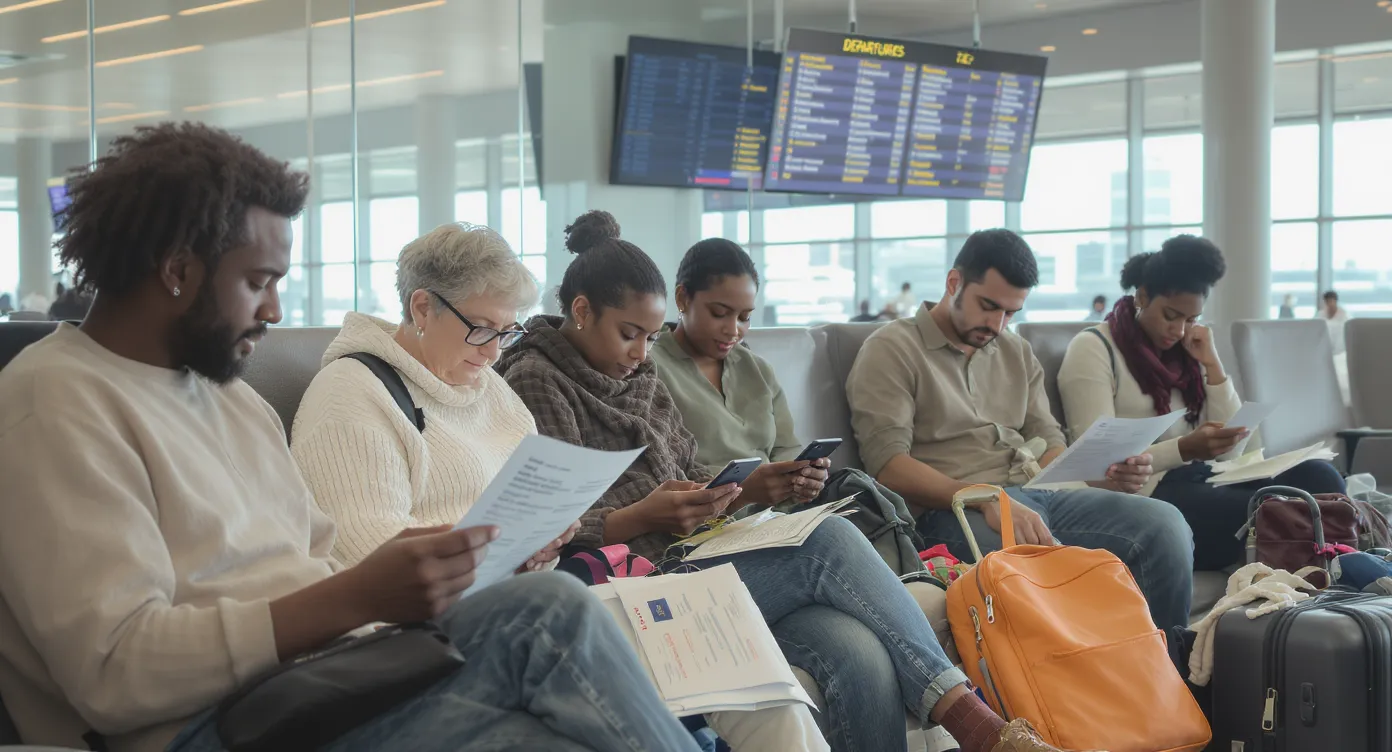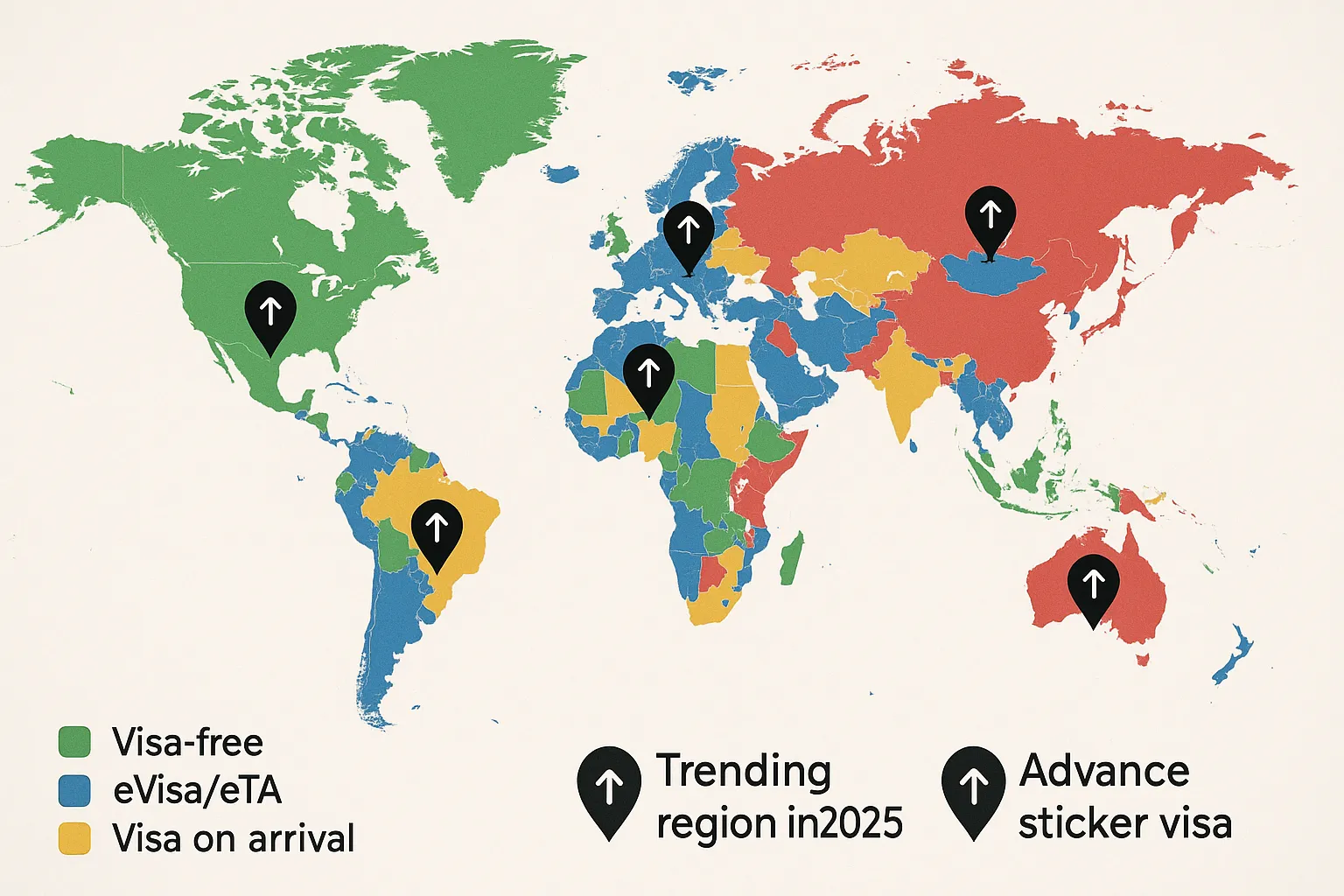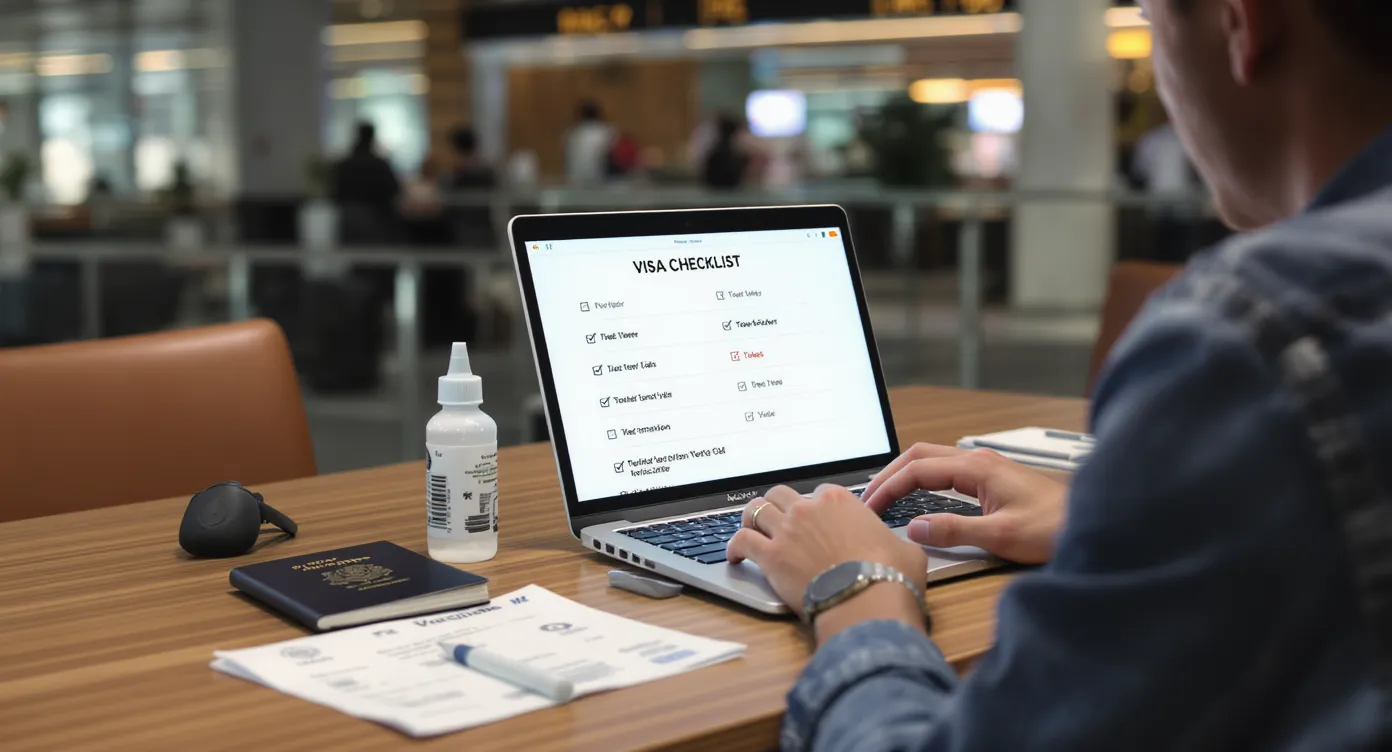Visa Policy 101: Rules That Impact Your Trip

Getting on the wrong side of a country’s visa policy can ruin even the most carefully planned itinerary—think denied boarding, lost deposits, and frantic last-minute re-routing. Yet most travelers only skim the rules (if they look at all) and assume a passport stamp is a mere formality. In reality, visa policy is a living rulebook that governs who may cross a border, for how long, and under what conditions. This primer breaks down the core concepts every traveler should understand—plus the 2025 trends making policies stricter in some places and easier in others.
What Exactly Is a Visa Policy?
A visa policy is the collection of laws, regulations, and administrative practices a government uses to control entry, stay, and exit of foreign nationals. It answers five fundamental questions:
- Who is allowed to enter without a visa? (visa-free or visa-exempt)
- Who must obtain authorization in advance? (eVisa, traditional sticker visa, or electronic travel authorization)
- For what purposes? (tourism, business, work, study, transit)
- How long may they stay? (validity period and maximum days per visit)
- What supporting documents are required? (funds, insurance, onward ticket, biometrics, etc.)
Countries design these rules to balance national security, economic goals, diplomatic reciprocity, and public-health considerations. The result is a patchwork system that shifts rapidly when politics, pandemics, or security threats change.
Key Visa Policy Elements That Affect Your Trip
| Policy Element | Why It Matters | Typical Traveler Impact |
|---|---|---|
| Visa Exemption Lists | Determines if you can enter with just a passport | U.S. passport-holders can stay 90 days in Japan visa-free, but need a visa for mainland China |
| Electronic Visas (eVisas) & eTAs | Faster online applications replacing embassy visits | India, Kenya, Türkiye issue approvals within 24–72 h |
| On-Arrival Visas | Pay fee and queue at the airport; still risky if rules change mid-flight | Indonesia VoA requires proof of outbound ticket and US$35 fee |
| Consular/Sticker Visas | Paper application, interview, longer processing | Schengen C-visa for non-exempt nationals can take 15–45 days |
| Validity & Number of Entries | Dictates trip length and re-entry rights | Thailand’s 30-day VoA is single entry; UAE eVisa can be multiple entry for 60 days |
| Passport Validity Buffer | Minimum months your passport must remain valid after arrival | Most countries demand 6 months; some (e.g., Canada) accept 3 months |
| Proof of Funds & Ties | Demonstrates you will not overstay | Bank statements, employment letters often requested |
| Health & Security Checks | Vaccination certificates, criminal-record questions, watch-list screening | Yellow-fever proof for parts of Africa/South America; ETIAS security database checks |
Hidden “Gotchas” Travelers Miss
- Transit visas: Needed even if you never leave the airport (e.g., Australia for some nationalities).
- Overstay penalties: Fines, deportation, bans—check maximum days and exit-before dates.
- Dual citizens: Must exit/enter on the same passport used for the visa; rules vary (see our guide on dual-citizen eVisa tips).
2025 Trends Reshaping Global Visa Policy
-
Digital-First Entry Systems
More than 80 countries now offer an eVisa or eTA, according to the UNWTO Visa Openness Index. The EU’s ETIAS and the UK ETA rollouts alone will affect 1 billion annual trips. -
Biometric & AI Security Layers
Facial recognition at eGates, algorithmic risk scoring, and continuous watch-list updates are becoming the norm (read “How Biometric Technology Is Streamlining Airport Security”). -
Reciprocity & Geopolitics
Diplomatic rows can trigger tit-for-tat visa fees or suspensions within weeks. Example: Russia and several EU states tightened mutual requirements in 2024. -
Health Declarations Folded Into Visas
Post-pandemic, digital health certificates are merging with visa databases to enable “green lane” travel. -
Economic Liberalization
Saudi Arabia, Brazil, and Vietnam expanded eVisa programs to hit ambitious tourism targets, slashing approval times to compete for visitors.

How Sudden Policy Shifts Disrupt Trips
- Pandemic Snap-Backs: In early 2020, 75 % of countries suspended or altered visa-free entry (IATA). Some never fully reverted.
- Major Events: International summits or sporting events can tighten screening (think Paris 2024 Olympics security measures).
- Regime Change & Conflict: Visas for Afghanistan, Sudan, and parts of Russia/Ukraine changed overnight, stranding travelers mid-route.
Lesson: An approval email is only part of the story—you must verify rules again just before departure.
Five Ways to Stay Ahead of Visa Policy Changes
- Use Trusted Databases: IATA Timatic or your airline’s check-in system is authoritative, but difficult to parse. SimpleVisa translates those raw rules into plain language in seconds.
- Apply Early, Even for eVisas: While some approvals arrive the same day, others trigger manual reviews. 10–15 business days of buffer is smart (see “When Should I Apply for an e-Visa for My 2025 Travel Plans?”).
- Monitor Validity Windows: A U.S. ESTA lasts two years, but each stay is 90 days; India’s eVisa offers 30, 90, or 365-day options—choose wisely.
- Carry Redundant Proof: Digital copy, printed copy, and cloud backup of your visa and passport. Power failures happen.
- Automate With Travel Apps: Many OTAs now embed SimpleVisa’s API to surface real-time eligibility during checkout. Look for a “Check visa rules” banner before you book.
Pre-Trip Visa Compliance Checklist
- Passport valid 6 + months beyond return date, with blank pages
- Confirm your citizenship is still eligible for chosen visa type
- Gather digital passport-size photo (JPEG, correct dimensions)
- Proof of onward travel & accommodation
- Bank statements or pay slips (if required)
- Travel insurance with minimum medical coverage (Schengen: €30,000)
- Vaccination certificate(s) if applicable
- Credit/debit card that supports 3-D Secure online payments

Frequently Asked Questions
I have two passports—can I switch after getting my visa? You generally must enter and exit on the passport used for the application. Switching mid-trip can invalidate your visa.
Does an approved visa guarantee entry? No. Border officers can still deny entry if your answers, documents, or intentions appear inconsistent.
What happens if my destination introduces a new eVisa after I booked? Airlines rely on live databases at check-in. If the new requirement applies to you, boarding can be denied. Use SimpleVisa’s free eligibility checker to track changes by booking reference.
Why did my friend get a multiple-entry eVisa while I’m limited to single entry? Many programs tailor validity to nationality, purpose, or applicant history. Always read the fine print during application.
Can I extend my stay if I love the destination? Some eVisas allow online extensions (e.g., Thailand, UAE). Others require leaving the country. Check our complete guide to eVisa extensions for details.
Ready to Travel With Confidence?
Navigating visa policy doesn’t have to be guesswork. SimpleVisa automates eligibility checks, guides you through every document requirement, and delivers approved eVisas directly to your inbox—or your customer’s booking flow—often in under 48 hours. Avoid costly surprises and turn compliance into a seamless part of the journey.
Plan smarter, travel smoother: Get your personalized visa plan with SimpleVisa today.